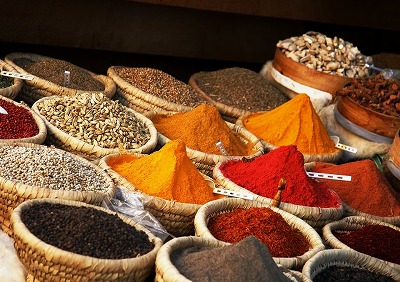 |
|
| I love spice. | |
| 私は香辛料(スパイス)が大好きです。 | |
| I can't live without spice. | |
| 私は香辛料なしでは生きていけません。 | |
| So, I examined about them on line. |
|
| それで私はインターネットでそれらについて調べました。 | |
examine(イグザーミン) 調べる、試験する、検査する、診察する examination 試験、検査、調査 |
|
| No.1- Cinnamon |
|
| (1)―シナモン | |
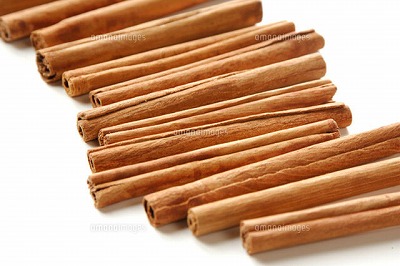 |
|
| Cinnamon is one of the oldest spice in the world. | |
| シナモンは世界最古のスパイスのひとつです。 | |
| It's also call it Nikki and Keihi in Chinese. | |
| それはニッキとも呼ばれ、また中国語では桂皮と呼ばれています。 | |
| The original home of Cinnamon is South-China or Vietnam. |
|
| 原産地は中国南部かベトナムです。 | |
| In Egypt, it was started using as preservative of mummy from 4000 B.C. | |
| エジプトでは、紀元前4000年頃からミイラの防腐剤として使われ始めました。 | |
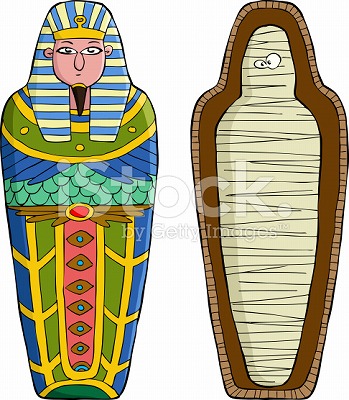 |
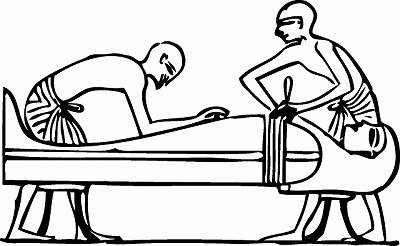 |
| It was introduced into Japan in the Nara-period. | |
| 日本には奈良時代に伝来しました。 | |
| Actually there's some cinnamon in the treasure of "Shosoin". | |
| 実は、正倉院の宝物の中にはシナモンが入っているんです。 | |
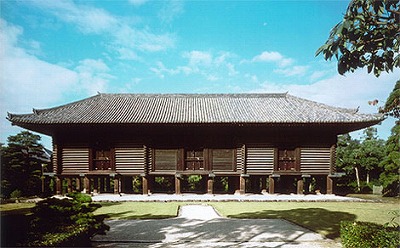 |
Shosoin in Nara 奈良の正倉院 |
| You know, It is the main component of garam-masala. | |
| 知っての通り、シナモンはガラムマサラの主な成分です。 | |
| It is used in some dishes, indian tea-chai and sweets, for example apple pie, cinnamon roll, Japanese sweets "Yatuhashi" and so on. |
|
| それはいろいろな料理やインドのお茶であるチャイ、そしてお菓子 (例えば、アップルパイ、シナモンロール、日本のお菓子の”八つ橋”など)に使われています。 |
|
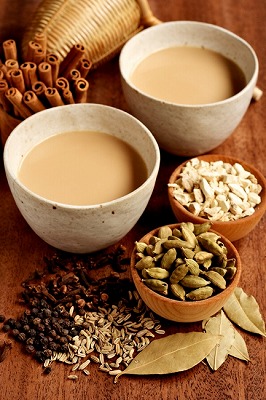 |
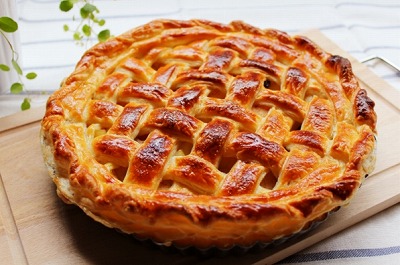 |
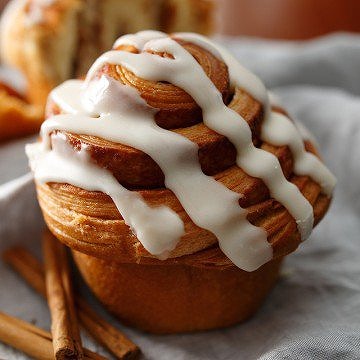 |
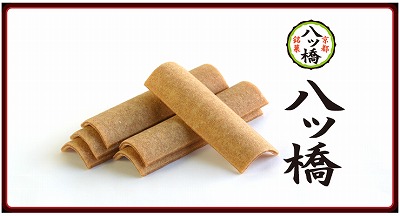 |
| Also it's used as medicine. |
|
| それはまた薬としても使われます。 | |
| It warms the body. | |
| 体を温めてくれます。 | |
| So Zintan is including cinnamon. | |
| それで仁丹にはシナモンが含まれているんです。 | |
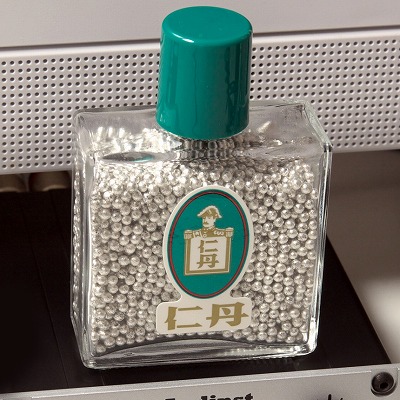 |
|
| No.2-Turmeric | |
| (2)ーターメリック(ウコン) |
|
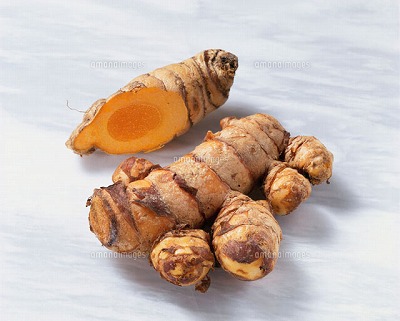 |
|
| The original home is India. | |
| 原産地はインドです。 | |
| It is used in Indian dishes and Ayurveda. | |
| インド料理やアーユルヴェーダに使われます。 | |
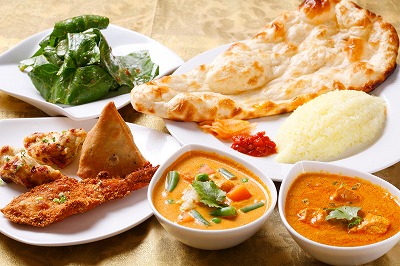 |
 |
| Original meaning of turmeric is bright yellow. | |
| ターメリックの原義(もともとの意味)は鮮やかな黄色という意味です。 | |
| It is shaped like a ginger. | |
| 生姜の様な形をしています。 | |
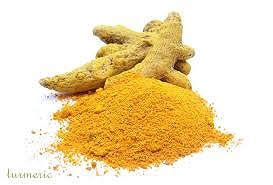 turmeric ターメリック(うこん) |
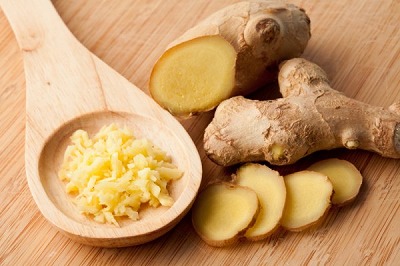 ginger 生姜 |
| India is ranked 1st in the world for turmeric production and export. | |
| インドはウコンの生産量・輸出量ともに世界第1位です。 | |
| Also it's used as medicine. | |
| また薬としても使われます。 | |
| It's good for liver. | |
| 肝臓のためにいいんです。 | |
| So in Okinawa, Izakaya(Japanese pub) always prepare the turmeric powder and people put it in Awamori. |
|
| だから沖縄では、居酒屋はいつもウコンの粉末を用意していて、お客さんはそれを泡盛に入れます。 | |
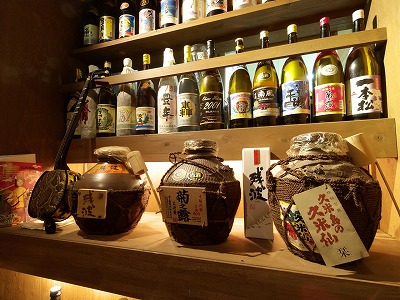 |
 |
| It's used as coloring to yellow too. | |
| 黄色の着色料としても使われます。 | |
| Monk clothes are colored by turmeric. | |
| お坊さんの着物はウコンで染められます。 | |
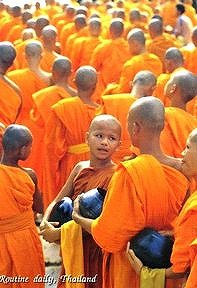 |
|
| I already knew about it in Spice-garden SriLanka. | |
| そのことについては、既にスリランカのスパイスガーデンで知りました。 | |
| No.3-Chili pepper | |
| (3)ー唐辛子 | |
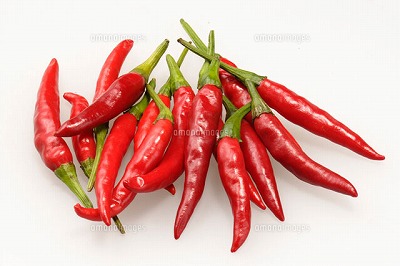 |
|
| The original home is Central and South America. | |
| 原産地は中南米です。 | |
| The history is very old since 6000 B.C in Mexico. | |
| そのメキシコでの歴史は紀元前6000年からで、とても古いです。 | |
| We say it Togarashi in Japan. | |
| 日本ではそれを唐辛子と言います。 | |
| Togarashi means pepper from Tou. | |
| 唐辛子の意味は唐から伝わった辛子の意味です。 | |
| But Tow means about foreign countries , not China. | |
| しかし唐の意味は漠然と外国を意味し、中国の意味ではありません。 | |
| In Kanazawa , we say it Nanba. | |
| 金沢では唐辛子をナンバと言います。 | |
| Nanba is Nanban in standard Japanese. | |
| ナンバは標準的な日本語では南蛮(なんばん)です。 | |
| Nanban means Portugal and Spain. | |
| 南蛮はポルトガルとスペインという意味です。 | |
| Portugal missionary brought chilli pepper to Japan in 1542. | |
| ポルトガル人宣教師が1542年に日本に唐辛子を持ってきました。 | |
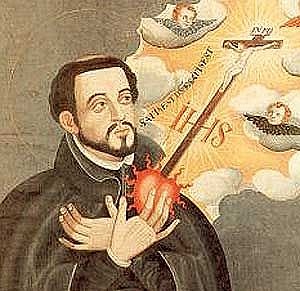 |
|
| But first, it was not used in dishes, it was used for seeing, making poison and keeping warm in toe. |
|
| でも最初jは料理に使われたのではなく、観賞用や毒薬製造、そしてつま先を温めるために使われました。 | |
| By the way, do you think why is it called chilli pepper in English? | |
| ところでなぜ唐辛子は英語で辛いコショウと呼ばれていると思いますか? | |
| Because when Christopher Columbus landed in the Americas by mistake, he misunderstood that it's a kind of pepper in India. |
|
| クリストファーコロンブスが間違えてアメリカ大陸に上陸した時に、 唐辛子をインドのコショウの一種だと勘違いしたためです。 |
|
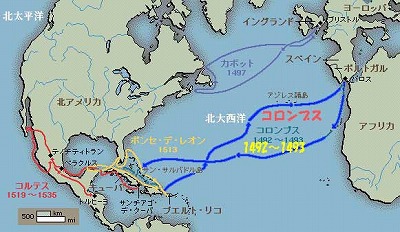 |
|
| That's why, it has called chilli-pepper since then. | |
| だからそれ以来、コショウと呼ばれるようになりました。 | |
| Its taste is hot at first, but when we get used to it, we love the flavor,
that depends on the person of course. |
|
| その味は最初、辛いですが、でも慣れるとその味が大好きになります、もちろん人によりますが。 | |
| There was a interesting experiment. | |
| 面白い実験がありました。 | |
| They gave some mouse two kind of food. | |
| マウスに2種類の餌を与えました。 | |
| One was just food, and the other was food including chilli pepper. | |
| 1つはただの餌、もう1つは唐辛子入りの餌でした。 | |
| When mouse got used to it, they prefered the chill food to just food. | |
| マウスは慣れてくると、ただの餌よりも唐辛子入りの餌の方を好みました。 | |
| Lots of spice use chilli pepper , for example tabasco, chilli oil, currypowder doubanjiang and so on. |
|
| たくさんの香辛料が唐辛子を使います、例えば、タバスコ、ラー油、カレーパウダー、豆板醤など。 | |
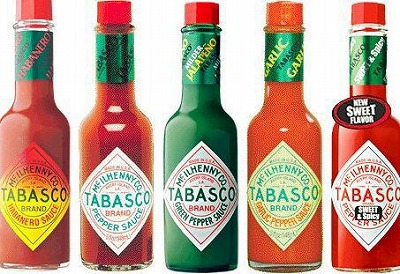 |
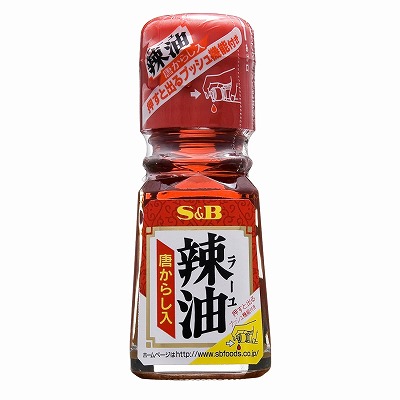 |
| No.4-Pepper | |
| (4)−コショウ | |
| The original home is India. | |
| 原産地はインドです。 | |
| There are 4 kinds of pepper. | |
| 4種類のコショウがあります。 | |
| Black pepper, white pepper, blue pepper, pink pepper. | |
| 黒コショウ、白コショウ、青コショウ、ピンクコショウです。 | |
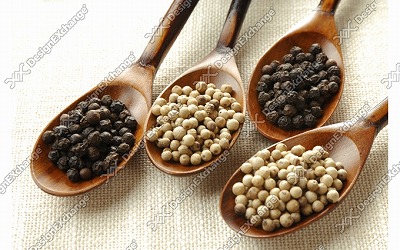 |
|
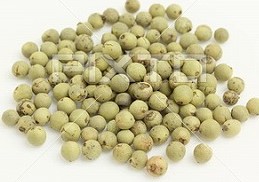 |
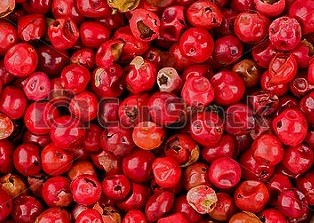 |
| Now I'll show you the history of pepper. | |
| それではコショウの歴史を話しますね。 | |
| Greece in the 4th century B.C Father of medicine, Hippocrates wrote that mixed pepper honey and vinegar is good for women's sickness. |
|
| 紀元前4世紀のギリシャ 医学の父であるヒポクラテスは、コショウと蜂蜜と酢を混ぜたものは婦人病にいいと書きました。 |
|
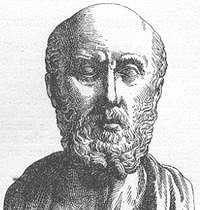 |
|
| Old Rome in 400 A.D. Old Rome people loved pepper. They used it to meat and honey. |
|
| 紀元後400年の古代ローマ 古代ローマ人はコショウを好みました。 彼らはそれを肉や蜂蜜に使いました。 |
|
| Japan in the Nara period 700 A.D Pepper and cinnamon has been saved in Shosoin Nara. That's amazing ! |
|
| 紀元後700年奈良時代の日本 奈良の正倉院にはコショウやシナモンが保存されているんです。 すごいですね〜!。 |
|
| Europe in the Middle Ages (the 13th〜14th century) Lots of Arab merchants sailed for Malabar Coast India from the Persian Gulf. So Malabal Coast was called Pepper Coast. First Arab merchant monopolized the oriental root, but Venice merchant traded with Arab merchant, then Venis merchant monopolized to import , especially pepper. Marco Polo wrote on "Touhoukenbunroku" that there are lots of gold pearl and pepper tree in Japan. Gold and pearl are true, but pepper tree is not true. |
|
| 13〜14世紀の中世ヨーロッパ たくさんのアラブ商人たちがペルシャ湾からインドのマラバル海岸に向けて出帆しました。 だからマラバル海岸はコショウ海岸とも呼ばれていたのでした。 最初、アラブ商人たちは東洋ルートを独占していましたが、ベネチア商人たちがアラブ商人たちと 貿易して輸入(特にコショウ)を独占しました。 マルコポーロは東方見聞録で、日本にはたくさんの金と真珠とコショウの木があると書きました。 金と真珠は本当ですが、コショウの木は本当ではありません。 |
|
| Europe in the 15th century Christopher Columbus sailed to west for pepper, but he landed in the Americas by mistake. Vasco da gama sailed for India. He said to King of India "We came here for christianity and pepper. |
|
| 15世紀のヨーロッパ クリストファーコロンブスはコショウを求めて西へ出帆しましたが、間違えてアメリカ大陸に上陸しました。 バスコダガマはインドに向けて出帆しました。 彼はインドの王様に「我々はキリスト教の布教とコショウのためにここにやって来ました。」と言いました。 |
|
| The Middle Ages Europe, Pepper 30g was the same price as Gold 30g! | |
| 中世ヨーロッパでは、コショウ30gと金30gは同じ値段だったのでした! | |
 |
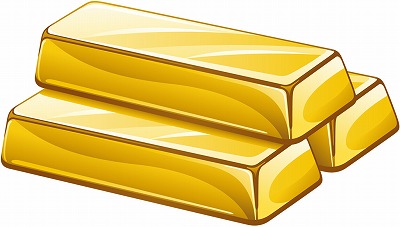 |
| So that means, how much was a bottle of pepper (50g) then ? | |
| ということは、コショウ1瓶(50g)はその頃いくらくらいということになるでしょうか? | |
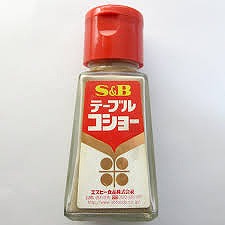 |
|
| Now, gold 1g = about 5000 yen. | |
| 現在、金1gは約5000円です。 | |
| So if it's the Middle Ages now, it was 250000 yen ! ! ! |
|
| だから、もし今が中世なら、コショウ1瓶は250000円だったのです!!! | |
| How happy we are ! We use it freely and in luxuly. |
|
| 私達は何て幸せなんでしょうか! コショウを好きなだけぜいたくに使えます。 |
|
| By the way, do you know "The Hajikami-Shinto shrine" in Kanazawa city ? | |
| ところで、金沢市の”波自加弥神社(はじかみ)”を知っていますか? | |
.jpg) |
.jpg) |
| Hajikami means ginger, old Japanese. | |
| はじかみは日本の古いことばで、生姜を意味します。 | |
| To my surprise, gods of the shrine are many kinds of spice. | |
| 驚いたことに、その神社の神様たちはいろいろな種類の香辛料なのです。 | |
| The shrine festival is held on every June 15th. | |
| 毎年6月15日に、その神社のお祭りが開催されます。 | |
| Lots of spice are offered to the gods on that day. | |
| その日には、たくさんの香辛料が神様に供えられます。 | |
.jpg) |
.jpg) |
| Gingers are offered from farmers, Wasabi, Mustard, Red pepper, Black pepper,
Chinese hot oil, Curry powder and so on are offered from HOUSE and SB, Japanese spice company. |
|
| 生姜は農家から、わさびや辛子、唐辛子、こしょう、ラー油、カレー粉などは日本の香辛料の会社である ハウスやエスビーなどから奉納されます。 |
|
.jpg) |
.jpg) |
.jpg) |
.jpg) |
.jpg) |
.jpg) |
| What an interesting country Japan is ! |
|
| 日本って何ておもしろい国なんでしょうか! | |
| 2015年10月29日(木) | トップページへ戻る |